Following The Carlina White Money Trail
Kidnapped woman seeks cash, but trust was liquidated

View Document
FEBRUARY 11--The feel-good story of kidnap victim Carlina White lasted all of a couple of weeks before financial recriminations drove a wedge between the 23-year-old woman and her birth parents.
After last month’s family reunion, White--who was snatched from a Harlem hospital three weeks after her July 1987 birth--began pressing her parents, Joy White and Carl Tyson, for money the couple received to settle a lawsuit brought against New York City’s Health & Hospitals Corporation (HHC).
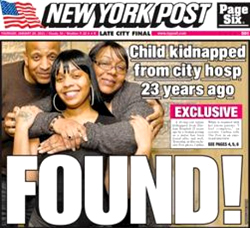 In a Today Show interview, Joy White said, “I’m disappointed. It really hurts me that it’s all about money.” Carlina White has also reportedly returned to using the name Njedra Nance, which was given to her by Ann Pettway, the woman who raised her--and who is now jailed on a federal kidnapping charge.
In a Today Show interview, Joy White said, “I’m disappointed. It really hurts me that it’s all about money.” Carlina White has also reportedly returned to using the name Njedra Nance, which was given to her by Ann Pettway, the woman who raised her--and who is now jailed on a federal kidnapping charge.
Records show that White’s parents settled their lawsuit against HHC in late-1992 for $750,000. More than a third of that figure went to the couple’s lawyer, with the remaining balance--$487,929.84--divided into three equal shares, according to a U.S. District Court order.
Joy White and Tyson received $162,643.28 apiece, while the third share was placed into a trust for their missing daughter. A February 1993 agreement stipulated that the funds would remain in the trust until July 15, 2008, the day Carlina turned 21. If she had not been found by that date, the trust would terminate and Joy White and Tyson would receive “the principal of the trust estate and any income earned.”
According to court documents, White’s parents sought to cash out their missing child’s trust five years before it was scheduled to expire.
In late-2003, the pair petitioned a federal judge for an order terminating the trust and “accelerating” payment of its assets to them. At the time, the Carlina White trust was worth more than $195,000, according to UBS Paine Webber investment statements.
Joy White and Tyson argued that they had diligently searched for their daughter and were seeking to move on with their lives. In an affidavit, White stated that she wanted to “finalize and seek closure to all aspects of this litigation.” As a single mother of two children, she also cited a “tight financial budget that leaves me with no disposable income.” White reported that she earned less than $45,000 annually and, after expenses, “I do not have money to spend on luxuries, nor even own a car.”
 White and Tyson also argued that the trust’s low-risk investment strategy (which involved New York State bonds and U.S. treasury bills) was too conservative and yielded “nominal returns.” They wanted the “opportunity of reinvesting the funds in investments for growth as well as income.”
White and Tyson also argued that the trust’s low-risk investment strategy (which involved New York State bonds and U.S. treasury bills) was too conservative and yielded “nominal returns.” They wanted the “opportunity of reinvesting the funds in investments for growth as well as income.”
The pair’s motion to liquidate the trust was strongly opposed by HHC and a guardian appointed by the court to represent Carlina White’s interests. While sympathetic to White and Tyson, the guardian, Emily Ruben, argued that it was “clearly foreseen that Carlina might not be found before her 21st birthday. That is why the trust was set up to last until that date.”
The request to cash out the trust early was denied by Judge Leonard Sand in January 2004.
The trust was eventually liquidated, on schedule, in mid-2008. Based on prior investment returns, the Carlina White trust was likely worth about $225,000 when it was split between her birth parents. As for the whereabouts of those funds, Joy White (pictured above) said this week, “It’s gone, we don’t have the money.”
Apparently she and Tyson opted not to reinvest the money “for growth as well as income” as they once claimed they wanted to do when seeking the early liquidation of their missing daughter’s trust.
While Carlina White tracked down her parents 30 months too late to benefit from the trust in her name, the settlement agreement with HHC does contain a pair of benefits for which she still appears eligible. No matter when she was found, the city agency agreed to pay the “reasonable costs of her education through college” as well as costs related to medical or psychological treatment required as the result of her abduction. (14 pages)


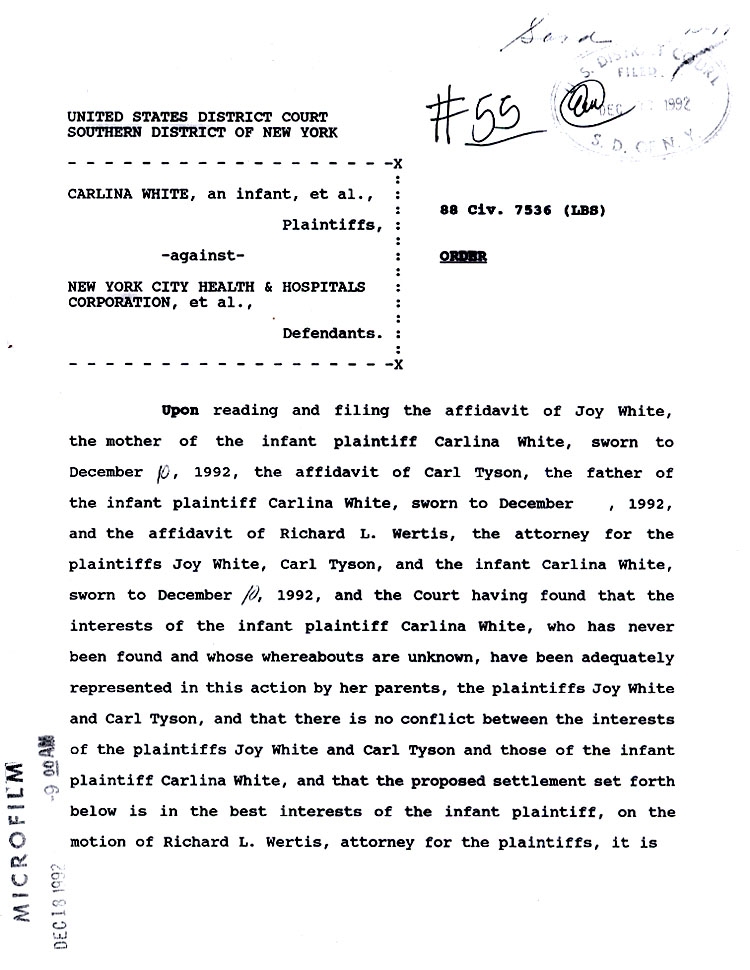
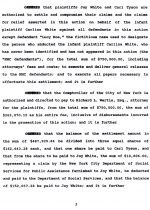

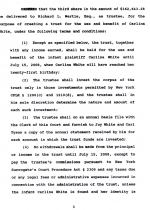

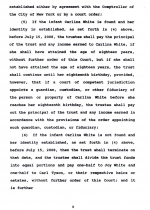


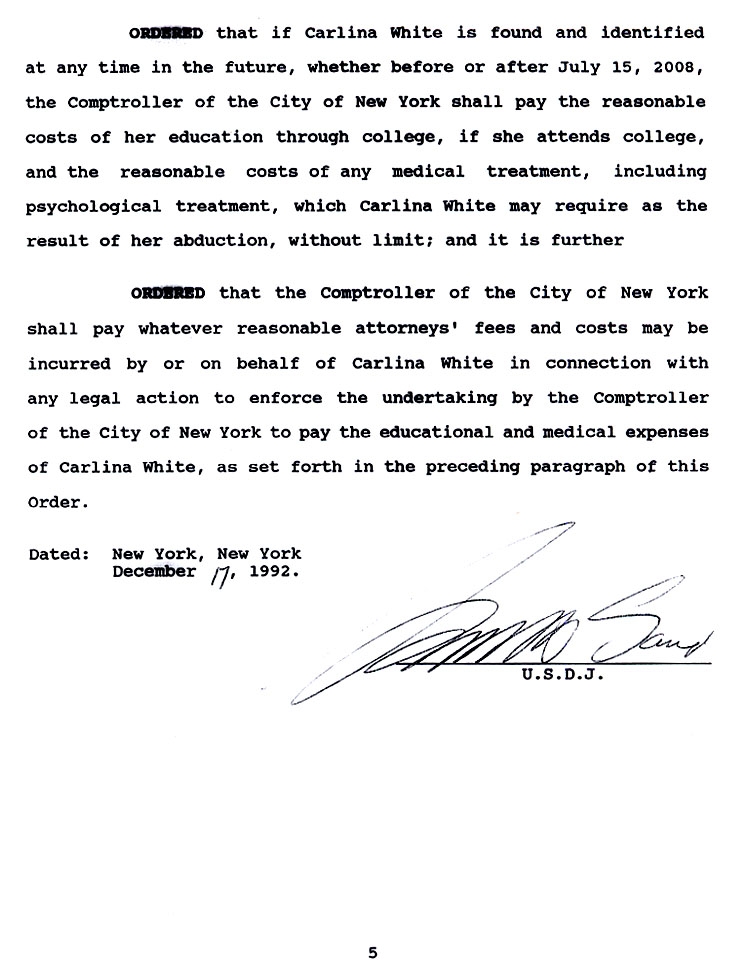
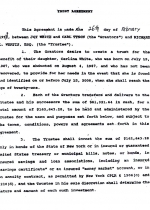

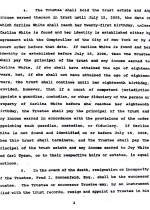

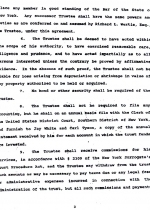

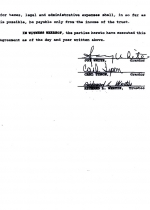



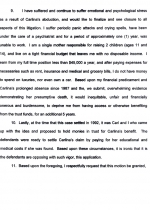


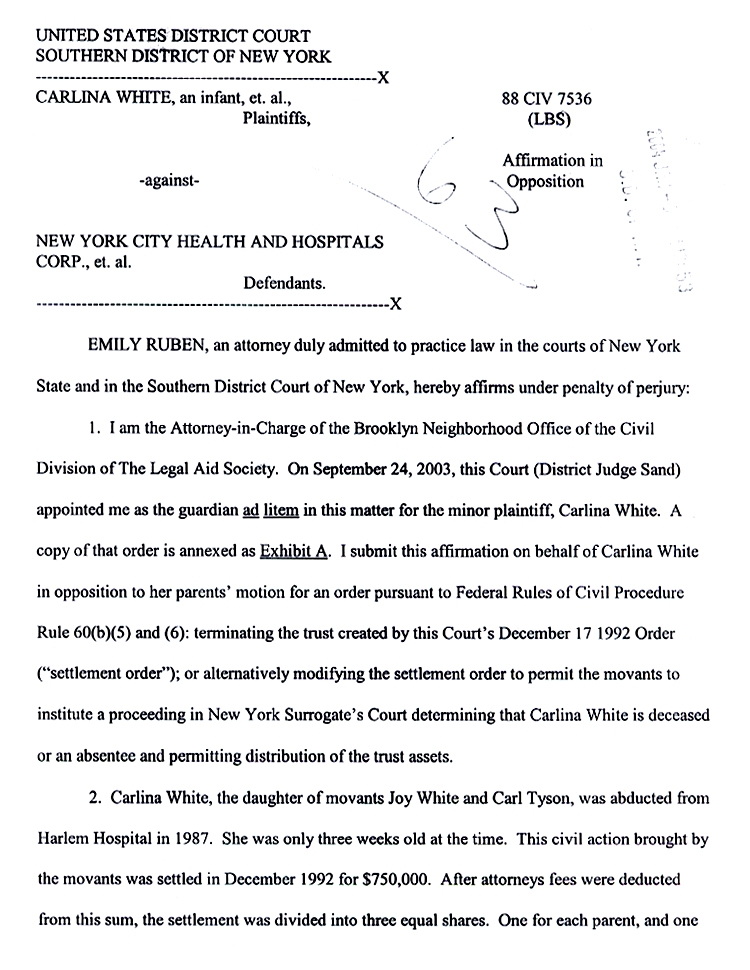
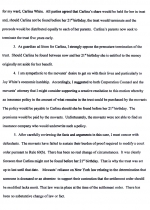




Comments (16)